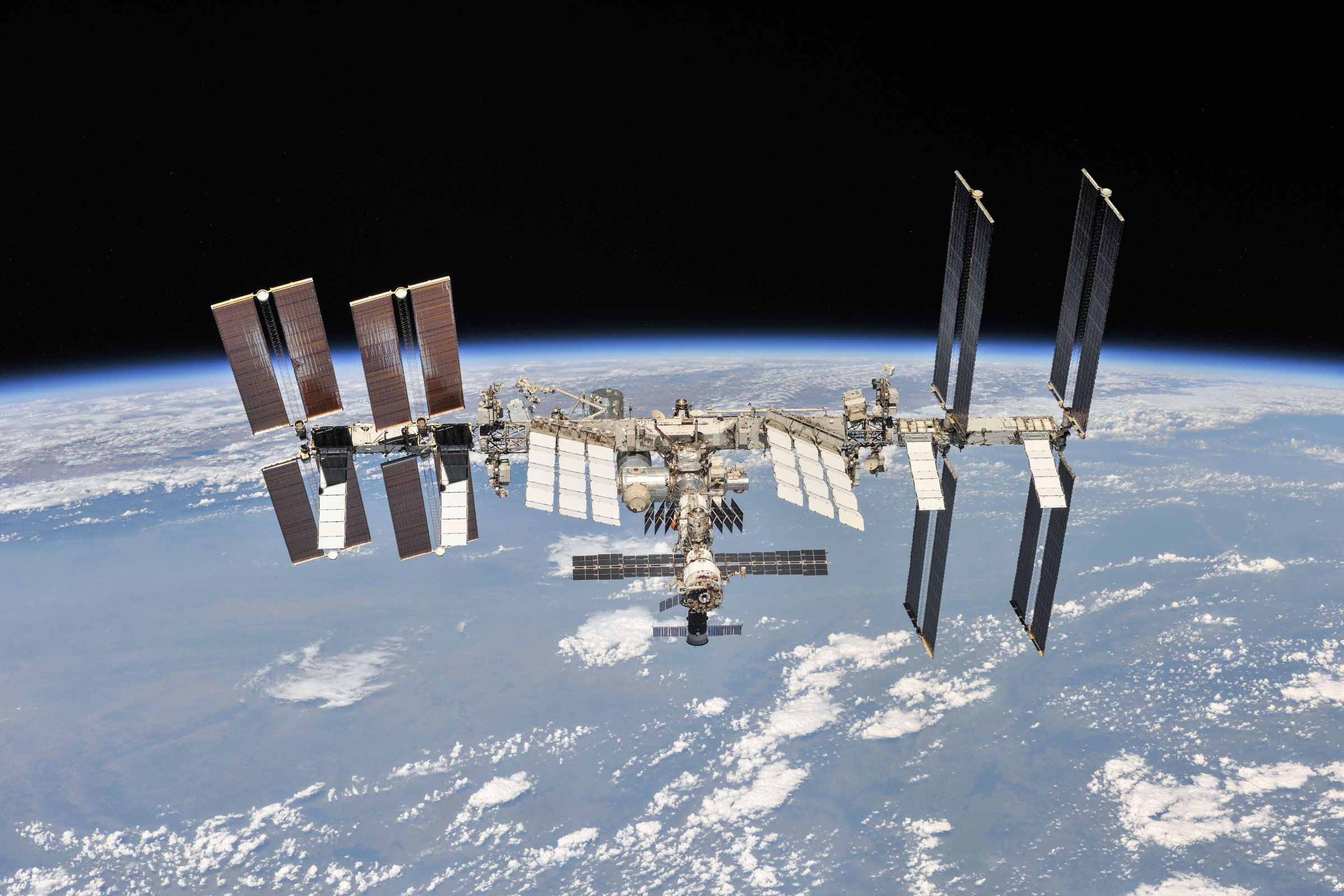
At a time when most gadgets, on average, last only a handful of years, it’s heartening to note that one of the most complex technological instruments ever built is still going strong. On Nov. 20, the International Space Station (ISS) reached a two-decade milestone since the launch of its first module. Beyond just a feat of engineering, the ISS serves as an all too rare example in this hyper-partisan era of what can be achieved when our desire to cooperate triumphs over our divisions.
It was on this day in 1998 that aerospace engineers from former rivals Russia and the United States celebrated the lift off of the Moscow-built, U.S.-funded unit Zarya (“sunrise”) as it took off from Kazakhstan’s Baikonur Cosmodrome. At 11:40 a.m. on a cloudy Friday, the first component of the ISS punched its way into orbit where it served as the foundation of an international space exploration program that continues today.
But Zarya, and even the ISS as we know it, may never have existed had the vestiges of Cold War animosity and a bitter Space Race not been set aside to bring Russia onboard the station project. Following the collapse of the Soviet Union in 1991, the U.S. tapped Russia’s skilled but idle space industry to help bring down costs and expedite Ronald Reagan’s 1984 vision of a “permanently manned space station.” In their audacious bid to create a continuously inhabited structure 250 miles above the Earth, the long-time adversaries found common ground.
U.S.-Russian teams continued to forge ties in the final frontier, including with the ISS’s first crew. Astronaut Bill Shepherd and cosmonauts Yuri Gidzenko and Sergei Krikalev climbed aboard on Nov. 2, 2000. At the time, there wasn’t much to the station circling the Earth once every 90 minutes. But over the next two decades, space agencies based in 15 countries including Japan, Canada, France, Germany and Spain transformed the extraterrestrial springboard into a modular behemoth with 15 pressurized components. Additions like Canada’s robotic appendage Canadarm2, and Japan’s Kibo Laboratory Module helped the ISS grow to nearly the size of a football field.
Continuously staffing the giant orbiting laboratory with a multinational team of six has also relied on intercontinental collaboration. According to NASA, 230 individuals from 18 countries have visited. It’s a testament to human progress that we are now in an age where people who reached adulthood this month haven’t lived a single day without there being a human in space.
Despite its triumphs, the staggering cost of the ISS has been a source of contention: estimates put the bill between $100 and $150 billion. Many argue that money could have been better spent improving conditions on Earth. It hasn’t helped that there have not been many scientific results from onboard experiments with commercial or social applications back on terra firma.
Still, the research has been ambitious, focusing on how different substances and compounds—like cells, tissues and liquids—react when freed from the constraints of gravitational forces. Many studies have looked at the human body’s response to long-duration spaceflight, a vital field to understand if we want to survive the 500-odd-day journey to and from Mars. Information gleaned from exercises like two astronauts’ record, year-long stay on the station is crucial in helping humans push the boundaries of space exploration.
But it’s the station’s role as the largest, peaceful scientific collaboration in history that has earned it the most plaudits. Space exploration is a deadly and expensive endeavor, and multination partnerships defray the burden. Collaborations between mission controls have also helped sustain missions. After NASA discontinued the Space Shuttle program in 2011, Russia’s Soyuz spacecraft started selling rides.
Cosmic collaborations on the station have also guaranteed that even amid diplomatic standoffs, communication channels between ISS nations cannot be completely closed off. During the 2014 Crimea crisis, when Russian-U.S. relations were mired in animus and sanctions, NASA and Roscosmos continued to cooperate on the Space Station, where they both had cash and lives at stake. And even though during the crisis a Russian official suggested that the U.S. could skip Soyuz and use a trampoline to get to the ISS, when a potential ammonia leak imperiled American astronauts the same official assured the team they could stay in the Russian section of the station for as long as required.
As governments set their sights and budgets on the Moon, Mars and beyond, the future of the 20-year-old ISS remains nebulous. NASA has committed funds only until 2024. There has been preliminary talk of deorbiting the station and crashing it into the Pacific Ocean or handing over the keys to private companies. Whatever its fate may be, the ISS’ role as a one-of-a-kind emissary for international fellowship should not be forgotten.
More Must-Reads from TIME
- Donald Trump Is TIME's 2024 Person of the Year
- Why We Chose Trump as Person of the Year
- Is Intermittent Fasting Good or Bad for You?
- The 100 Must-Read Books of 2024
- The 20 Best Christmas TV Episodes
- Column: If Optimism Feels Ridiculous Now, Try Hope
- The Future of Climate Action Is Trade Policy
- Merle Bombardieri Is Helping People Make the Baby Decision
Write to Kamakshi Ayyar at kamakshi.ayyar@time.com